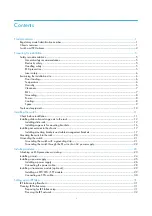
NI cDAQ-9172 User Guide and Specifications
28
ni.com
Getting Started with AI Applications in Software
You can use the NI cDAQ-9172 chassis in the following analog input
applications:
•
Single-Point
•
Finite
•
Continuous
For more information about programming analog input applications and
triggers in software, Refer to the
NI-DAQmx Help
or the
LabVIEW Help
in
version 8.0 or later for more information.
The
NI-DAQmx Help
is available after installation from
Start»
All Programs»National Instruments»NI-DAQ»NI-DAQmx Help
.
To view the
LabVIEW Help,
in version 8.0 or later, select
Help»
Search the LabVIEW Help
in LabVIEW. Alternately, to download
the
LabVIEW Help,
go to
ni.com/manual
s
.
Analog Output
To generate analog output, insert an analog output C Series I/O module in
any slot on the NI cDAQ-9172 chassis. The generation specifications, such
as the number of channels, channel configuration, update rate, and output
range, are determined by the type of C Series I/O module used. For more
information, refer to the documentation included with your C Series I/O
modules.
You can run one hardware-timed (waveform) analog output task at a time
on the NI cDAQ-9172 chassis, with up to 16 waveform channels. At the
same time, you can also run one or more software-timed (single-point or
immediate) tasks.
For each analog output module, you can either:
•
Assign all of the channels on the module to the hardware-timed task.
•
Assign all of the channels on the module to one or more
software-timed tasks.
On a single AO module, you cannot assign some channels to a
hardware-timed task and other channels (on the same module) to
a software-timed task.
Analog Output Data Generation Methods
When performing an analog output operation, you either can perform
software-timed or hardware-timed generations. Hardware-timed
generations must be buffered.






































